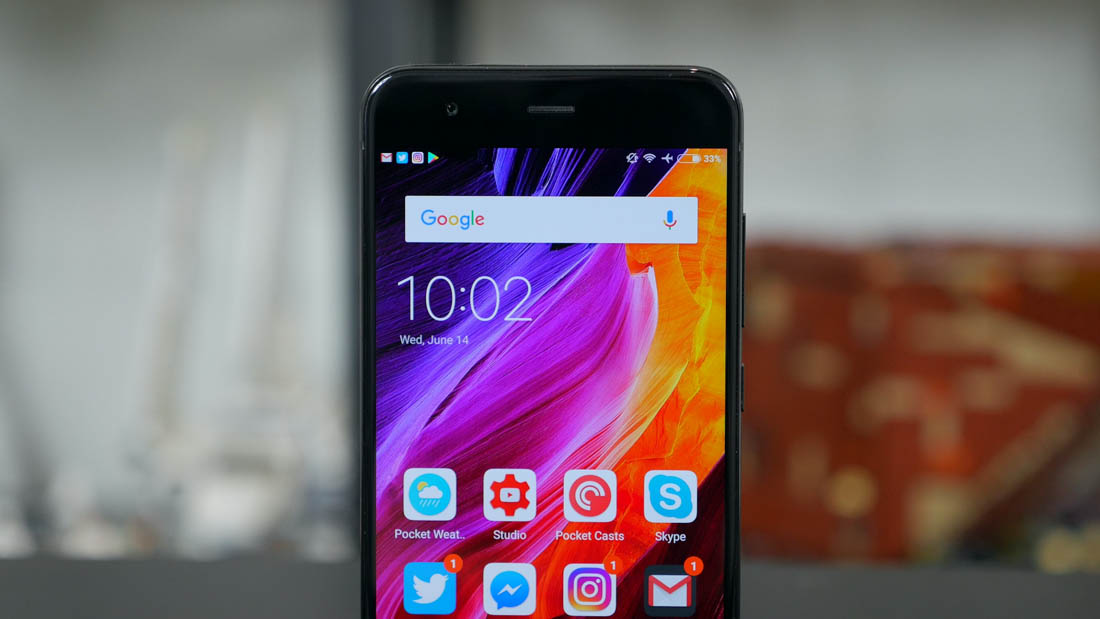Who Is It For?
The most important thing to remember when discussing the Xiaomi Mi 6 is its price. This is a flagship phone, but it won't set you back $600+ like most other flagship contenders.
Thus the key selling point to the Mi 6 is its hardware. At just over $400, you're netting yourself a Snapdragon 835, not some lesser-tier mid-range chip. The 835 is the fastest SoC on the market (that's available to Android OEMs), and provides around 30 percent better performance than the Snapdragon 821. It's more efficient than before, and highly capable for today's smartphone applications.
The end result, when paired with a whopping 6GB of RAM and reasonable NAND performance, is a smartphone that's extremely snappy to use. Xiaomi has also used just a 1080p display here, so graphics performance is superior to many other flagship phones that opt for 1440p instead. If you're after speed, the Mi 6 is a great option.
The display surprised me a fair bit, considering on paper it seems like just a basic 5.15-inch 1080p LCD. What we're actually seeing is excellent peak brightness above 600 nits, plus fantastic contrast and great color performance out of the box.
Another very solid aspect of the Mi 6 is battery life. Most smaller phones tend to suffer in the battery department, but this isn't the case here. The 3,350 mAh battery, efficient SoC and 1080p display combined deliver great battery life out of the box.
The Mi 6 includes a dual camera solution, with one camera providing wide angle shots and the other providing a 2x zoom. I like this sort of camera implementation, and the 2x zoom is useful during everyday photographing, particularly as it produces higher-quality photos in what is a bit of a surprise.
However, in general the Mi 6 camera doesn't compete strongly with the best smartphone cameras. Image processing isn't as good, which leads to merely 'okay' results in a number of situations. For the price you're still getting a solid camera solution though.
While Xiaomi's software has improved drastically over the last two years, it still needs a lot of work to bring it up to the same standard as what Google provides on the Pixel.
It does run the latest version of Android (7.1.1) and there are some neat features, but there's a lot of unnecessary applications included and several features that are no longer all that unique.
Phone design is perhaps the most subjective area to a smartphone's overall quality, so I'm sure there are some out there that will appreciate what Xiaomi has done with the Mi 6's design. I didn't fall in love with the glass body for several reasons though. The glossy finish to both the glass and metal edges is incredibly slippery and doesn't execute well to give the phone a premium feel.
Those big bezels above and below the display also look dated in comparison to the Galaxy S8 and LG G6.
The Mi 6 is yet another phone that doesn't include a headphone jack, which like I've said before is a user hostile decision, and there's no microSD card slot either. I do appreciate features like stereo speakers and the quick fingerprint sensor.
The Xiaomi Mi 6 is a flagship phone with some outstanding areas and some weak spots. Considering the low price point, the phone still competes well with the best out there. Naturally, if you have $700+ to spend on something like the Galaxy S8 you'll be getting a better overall package, but the Mi 6 brings great hardware down to a sub-$450 price point, and for some people that's all you need.
Get the 128GB Xiaomi Mi 6 from Gearbest for just $471.99. Follow this link and use offer code EGMI6 at the checkout.
score
Pros: Top-end performance and hardware at an affordable price point. Fantastic display, even though it's only 1080p. Great battery life in a compact form factor. Zoom camera adds to the package.
Cons: Slippery, bezel-heavy design didn't win me over. No headphone jack! Camera output could still use some work.




